Are you tired of feeling uncomfortable and unproductive at your desk? You're not alone. Many people suffer from aches, pains, and discomfort due to poor ergonomics in their workspace. But what if I told you that the solution could be as simple as adjusting your desk height?
At Logicfox, we believe that everyone deserves a comfortable and healthy workspace. That's why we've created this ultimate guide to help you find your perfect ergonomic desk height. By the end of this article, you'll have all the knowledge and tools you need to create a workspace that supports your body and boosts your productivity.
The Problem: Poor Ergonomics
Before we dive into the solution, let's take a closer look at the problem. Poor ergonomics can lead to a host of issues, including back pain, neck strain, carpal tunnel syndrome, and even long-term injuries. These problems not only cause physical discomfort but can also negatively impact your mental well-being and job performance.
One of the most common culprits of poor ergonomics is an improperly adjusted desk height. When your desk is too high or too low, it can cause strain on your wrists, shoulders, and back. Over time, this strain can lead to chronic pain and even permanent damage.
Why Ergonomics Matters
Before diving into desk heights, it's important to understand what ergonomics is and why it matters. Ergonomics is the science of designing and arranging workspaces so that people can interact with them efficiently and safely. The goal is to create an environment that reduces stress on the body and risk of injury.
Proper ergonomics has been shown to reduce the risk of musculoskeletal disorders (MSDs), back pain, and eye strain. On the flip side, poor ergonomics not only increases your chances of developing these issues, but also negatively impacts productivity and work quality. Investing in an ergonomic workspace is an investment in your health and job performance.
Why Desk Height is Critical
Your desk height plays a crucial role in your overall ergonomic setup. Having your desk at an incorrect height can lead to poor wrist, arm, and shoulder positioning, causing strain and discomfort.
The ideal desk height allows you to maintain neutral positioning of your arms, wrists, and hands while working. This means your arms are relaxed at your sides, elbows are bent around 90 degrees, and wrists are straight.
However, standard fixed-height desks, which are typically 28-30 inches tall, only accommodate a small range of body heights, usually those between 5'8" and 5'10". So if you fall outside of that narrow range, you may need to make some adjustments to achieve proper ergonomics.
Factors Influencing Proper Desk Height
There are several key factors that go into determining the ideal height of your desk:
- Your height: This is the most important variable, as your dimensions proportionally impact the height you need.
- Elbow angle: When seated with arms at your sides, aim to have your elbows bent at 90-100 degrees while typing or writing.
- Shoe heel height: If you regularly wear shoes with tall heels or thick soles, factor that additional height into your calculations.
- Type of work: Different tasks, like writing by hand vs. typing vs. precision work, may require slightly different elbow angles and desk heights to optimize.
By taking all of these elements into account, you can zero in on the desk height that will provide maximum comfort and support for your specific needs.
Sitting vs Standing Desks
The two main categories of desks are sitting and standing desks. Traditional sitting desks have long been the norm in offices, but research has shown that prolonged sitting comes with a host of potential health risks, including obesity, cardiovascular disease, and chronic back pain.

In contrast, standing desks allow you to easily switch between sitting and standing throughout the day. Alternating positions has been associated with benefits like reduced risk of weight gain, lower blood sugar levels, improved mood and energy, and reduced back pain.
Sit-stand desks, in particular, provide the best of both worlds. Being able to adjust the height of your desk to either a sitting or standing position at the push of a button offers maximum flexibility to change your posture as needed. This is especially helpful for shared workstations that need to accommodate people of varying heights.
The Solution: Finding Your Perfect Desk Height
So, how do you find your perfect ergonomic desk height? The answer lies in understanding your body and your workspace. Here are some key factors to consider:
Your Height
Your height is the most important factor in determining your ideal desk height. A good rule of thumb is to have your desk at a height where your elbows are bent at a 90-degree angle when typing or writing. This allows for a neutral wrist position and reduces strain on your shoulders and back.
To find your ideal desk height based on your height, use this simple formula:
- Measure your height in inches
- Subtract 6 inches
- The result is your ideal desk height in inches
For example, if you're 5'6" (66 inches), your ideal desk height would be 60 inches (66 - 6 = 60).
So how do you determine what desk height is right for you? Here are some general guidelines:
For sitting desks, refer to this chart based on your height:
- 5'0" = 22.5" desk height
- 5'4" = 24"
- 5'8" = 25.5"
- 6'0" = 27"
- 6'4" = 28.5"
For standing desks, add around 12 inches to your sitting desk height:
- 5'0" = 36.5" standing desk height
- 5'4" = 39"
- 5'8" = 41.5"
- 6'0" = 44"
- 6'4" = 47"
The ideal standing desk height positions the top of the desk surface at elbow level, so your elbows are bent at 90 degrees.
There are also online ergonomic calculators that can factor in your height, monitor placement, and chair positioning to recommend an optimal setup. However, always listen to your body and make adjustments as needed - these are just starting points.
Your Chair
Your chair also plays a crucial role in your ergonomic setup. A properly adjusted chair should allow your feet to rest flat on the floor with your knees bent at a 90-degree angle. If your chair is too high or too low, it can throw off your entire posture and cause discomfort.
When adjusting your chair, make sure to:
- Adjust the seat height so that your feet rest flat on the floor
- Adjust the backrest to support your lower back
- Adjust the armrests so that your shoulders are relaxed and your elbows are bent at a 90-degree angle
If you're in the market for a new chair, consider investing in an ergonomic chair that offers adjustable features and lumbar support.
Your Work Surface
The surface of your desk can also impact your ergonomics. A desk with a hard, flat surface can cause pressure points on your wrists and forearms. To alleviate this pressure, consider using a soft wrist rest or investing in a desk with a slightly curved front edge.
If you do a lot of writing or drawing, an adjustable drafting table can be a game-changer. These tables allow you to adjust the angle of your work surface to reduce strain on your neck and shoulders.
Your Monitor
Your monitor placement is another important factor in your ergonomic setup. Your monitor should be positioned directly in front of you, with the top of the screen at or slightly below eye level. This helps to reduce neck strain and eye fatigue.
If you wear bifocals or progressive lenses, you may need to adjust your monitor slightly lower to accommodate your vision. A good rule of thumb is to have your monitor about an arm's length away from your body.
Creating an Ergonomic Workspace
Now that you know the key factors in finding your perfect desk height, let's talk about creating an ergonomic workspace. Here are some tips to keep in mind:
Adjust Your Desk Height
If your desk is too high or too low, don't be afraid to make adjustments. Many desks come with adjustable legs or can be raised with furniture risers. If you're in the market for a new desk, consider investing in a height-adjustable desk that allows you to switch between sitting and standing throughout the day.
Use Ergonomic Accessories
In addition to adjusting your desk height, there are many ergonomic accessories that can help to reduce strain and discomfort. Some popular options include:
- Ergonomic keyboards that promote a neutral wrist position
- Vertical mice that reduce wrist strain
- Lumbar support cushions that provide extra back support
- Footrests that promote better posture and circulation
Take Breaks and Stretch
Even with the most ergonomic setup, it's important to take breaks and stretch throughout the day. Sitting for long periods of time can cause muscle tension and fatigue. Try to take a break every 30 minutes to an hour to stand up, stretch, and move around.
Some simple stretches you can do at your desk include:
- Neck rolls
- Shoulder shrugs
- Wrist stretches
- Ankle rotations
The Benefits of an Ergonomic Workspace
Investing in an ergonomic workspace can have numerous benefits for your physical and mental well-being. Some of the most notable benefits include:
Reduced Pain and Discomfort
By adjusting your desk height and using ergonomic accessories, you can significantly reduce pain and discomfort in your neck, shoulders, back, and wrists. This can lead to improved posture, better circulation, and reduced risk of long-term injuries.
Increased Productivity
When you're comfortable and pain-free, you're more likely to be productive and focused. An ergonomic workspace can help to reduce distractions and improve your overall work performance. You may find that you're able to work for longer periods of time without feeling fatigued or uncomfortable.
Improved Mental Well-Being
Chronic pain and discomfort can take a toll on your mental well-being. By creating an ergonomic workspace, you can reduce stress, anxiety, and depression associated with physical discomfort. You may find that you have more energy and a more positive outlook on life when you're not constantly battling pain.
Conclusion
Finding your perfect ergonomic desk height is an important step in creating a comfortable and productive workspace. By considering your height, chair, work surface, and monitor placement, you can create a setup that supports your body and reduces strain and discomfort.
Remember, investing in an ergonomic workspace is an investment in your health and well-being. Don't be afraid to make adjustments and try new accessories until you find what works best for you.
At Logicfox, we're committed to helping people create healthy and comfortable workspaces. Check out our selection of ergonomic office furniture to find the perfect desk, chair, and accessories for your needs.


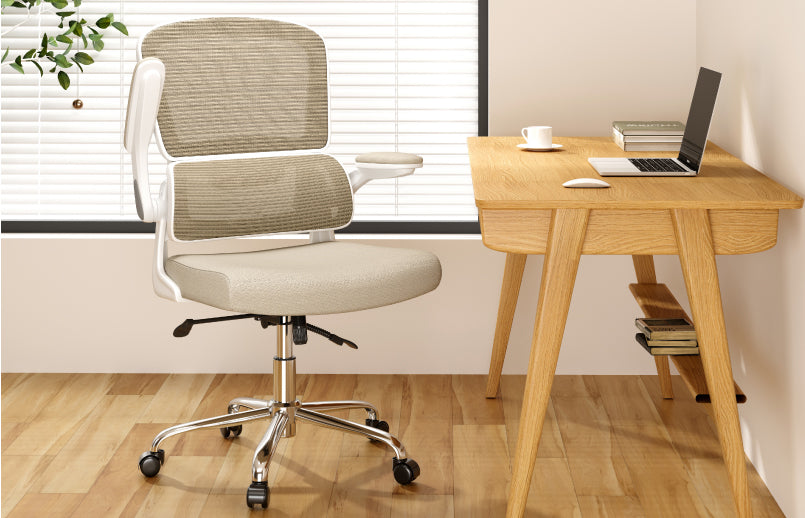
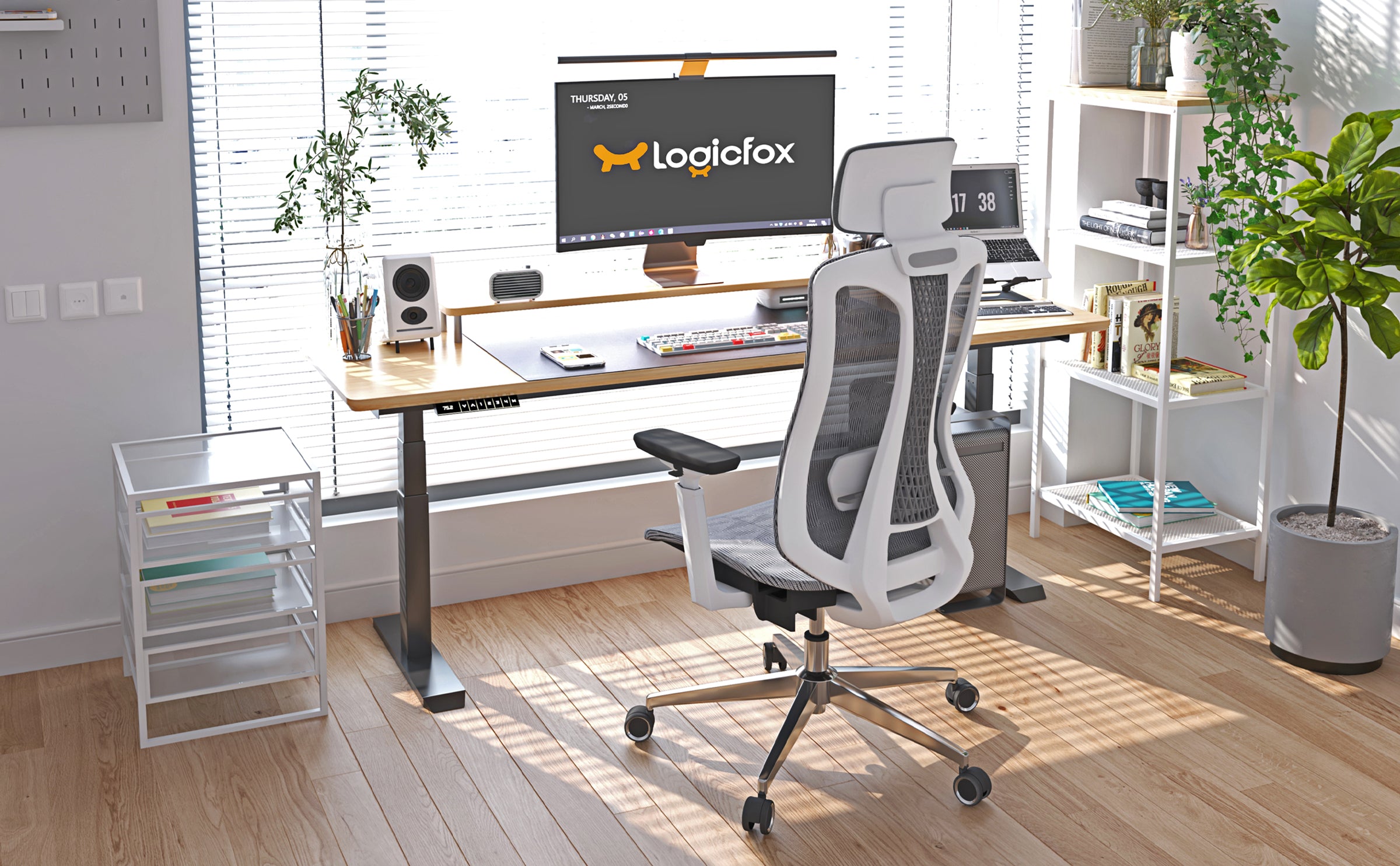
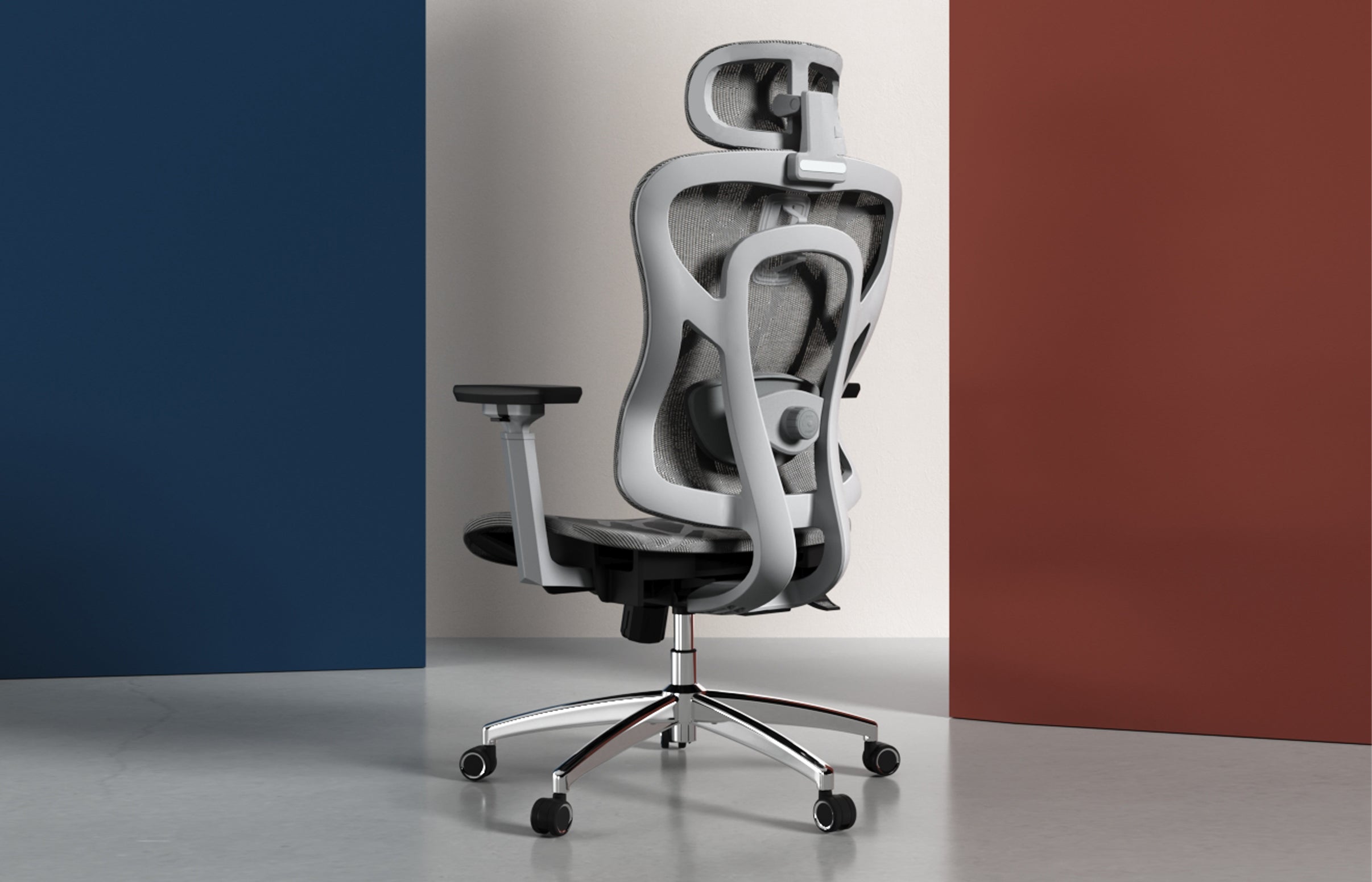
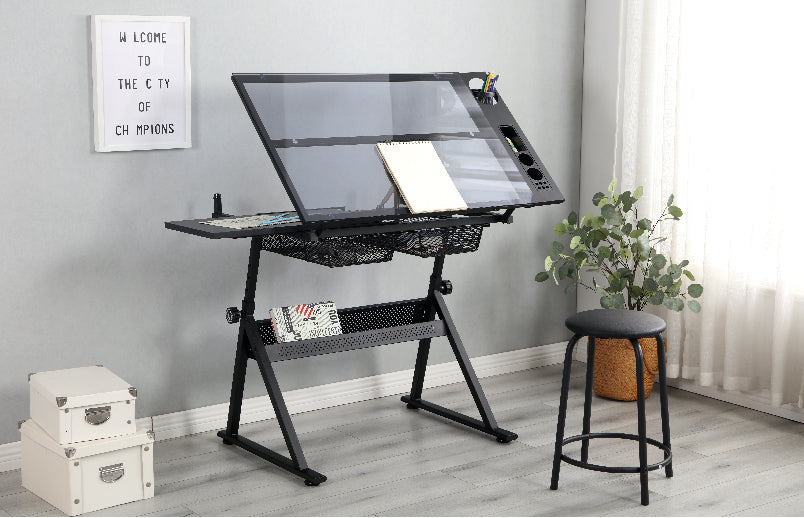
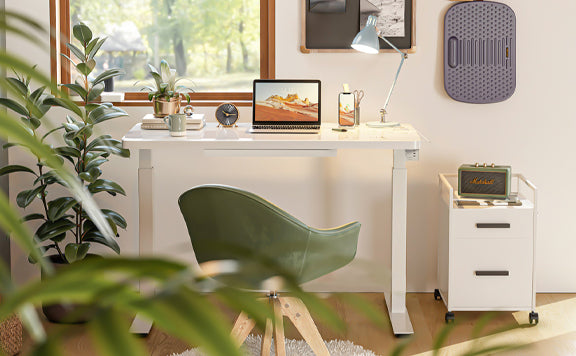
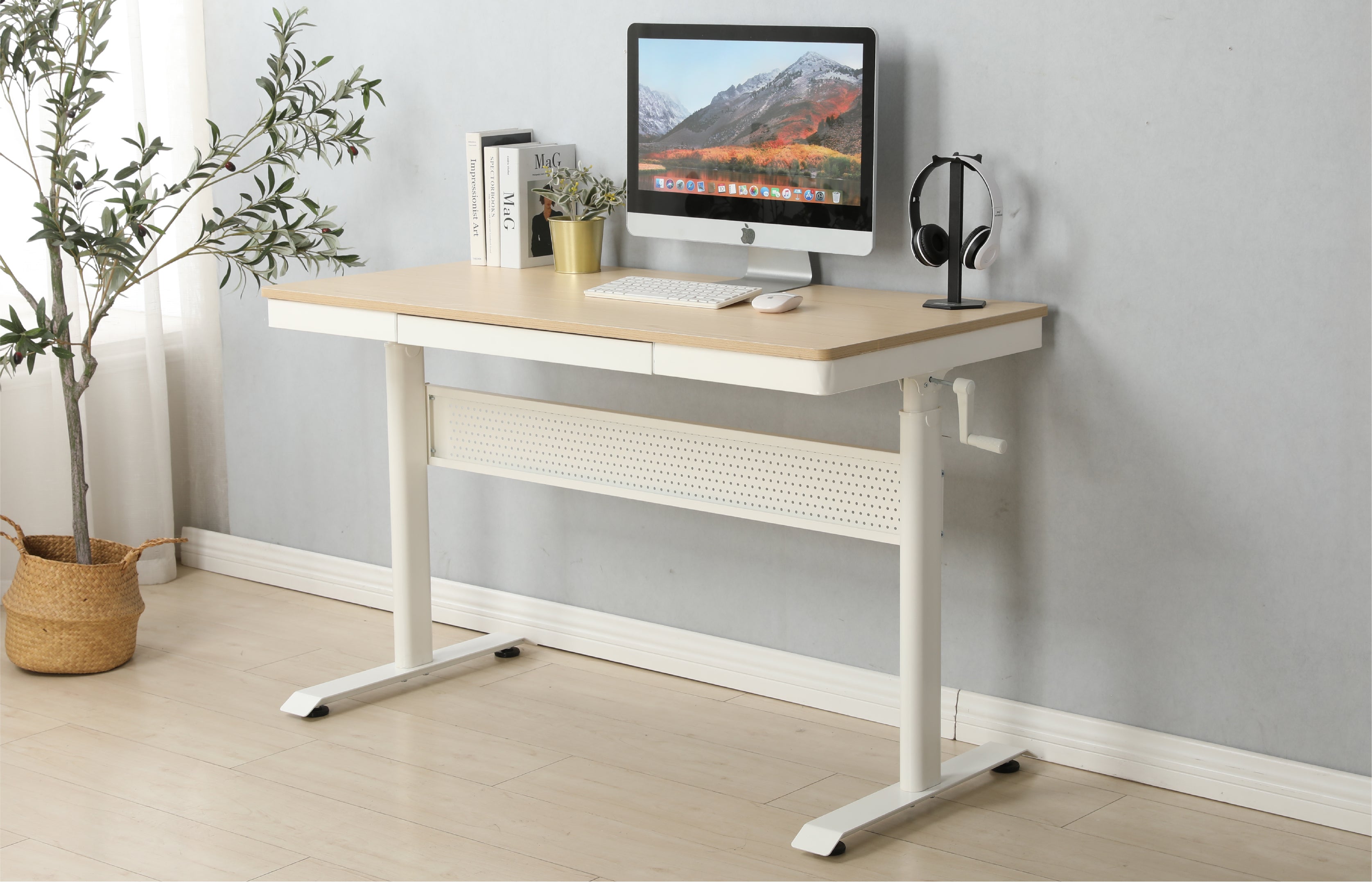







 United States
United States
Leave a comment